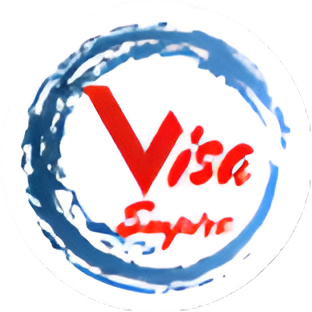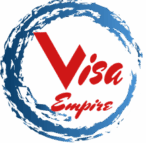Skilled Employer-Sponsored Regional (Subclass 494) Visa Guide

The Skilled Employer Sponsored Regional visa that is officially called the Skilled Employer Sponsored Regional (Subclass 494) visa, is Australia’s employer-sponsored route for filling genuine skilled vacancies in regional areas. For employers and job seekers alike, securing an approved nomination is the decisive step. In the absence of it, a subclass 494 visa application cannot progress.
This guide explains the 494 visa nomination requirements, how the nomination ties to the broader subclass 494 visa process, and practical tips to avoid common pitfalls.
Let’s proceed.
What The Subclass 494 Visa Does
The subclass 494 visa allows skilled workers to live and work in a designated regional area on a provisional basis. Its period typically extends for up to five years while being sponsored by an Australian regional employer.
This visa is focused on addressing regional skill shortages and creates a pathway to permanent residence for eligible holders who meet post-arrival requirements. This is a regional sponsored visa for Australia that employers use when they cannot source suitable local workers.
Why Employer Nomination Matters
This is fundamentally an employer sponsored visa Australia program. The employer must first be approved to sponsor and then lodge a nomination for a specific role.
The Department of Home Affairs assesses the employer’s suitability, the genuineness of the position, and whether the nomination satisfies rules such as labour market testing, salary, and regional location requirements. An approved subclass 494 visa nomination is the gateway to the applicant’s visa application.
Core Nomination Requirements Employers Must Meet
Below are the main points the sponsoring business must satisfy to successfully lodge a 494 employer-sponsored visa nomination:-
1. Employer must be an approved sponsor
Employers need an approved sponsorship (or be eligible to apply) and demonstrate that they are a legitimate operating business able to meet sponsorship obligations. The sponsor’s compliance history may be reviewed.
2. The nominated occupation must be eligible
The role must be on the relevant skilled occupation list for the skilled regional visa Australia scheme and be matched to an appropriate ANZSCO code and skill level. The duties in the position description should align closely with the nominated occupation.
3. Labour Market Testing (LMT)
For most nominations, employers must show reasonable efforts to recruit Australian workers prior to hiring overseas. This typically means advertising the role for at least four consecutive weeks in the four months before lodging and keeping evidence of advertisements, applicants, and interviews. Some exemptions also apply (such as particular regional allowances or international agreements). Thus, you must confirm if you qualify.
4. Salary and employment terms (TSMIT / AMSR)
The Department requires that the nominated role is offered on terms that meet Australian workplace laws and that the pay meets at least the Temporary Skilled Migration Income Threshold (TSMIT) or the Annual Market Salary Rate (AMSR) as applicable.
Note: From 1 July 2025 the TSMIT was increased.
Employers must use the current threshold that applies to the date they lodge the nomination. Ensuring salary compliance happens to be a strict requirement for subclass 494 nomination criteria.
5. Regional location and genuine position
The work must be performed in a designated regional location (check the Department’s region maps) and the position must be a genuine and full-time vacancy and not a casual, short-term, or artificial job that is created solely to access migration.
What Employers Typically Need To Submit For A Nomination
A robust nomination will normally include the following:-
- A detailed position description tied to an ANZSCO code.
- Evidence of labour market testing (job ads, dates, applicant resumes).
- Employment contract and terms showing the salary and conditions (including how superannuation is treated).
- Business evidence proving operational capacity (ABN records, financials, website, staff lists).
- If the AMSR is used (market rate evidence), supporting documents such as market salary surveys or payroll comparisons are required.
How Nomination Relates To The Applicant’s Eligibility
While the employer lodges the nomination, the nominee still needs to satisfy subclass 494 visa eligibility at the application stage:-
- Skills assessment relevant to the nominated occupation (unless exempt).
- Minimum relevant work experience (commonly at least 3 years for the employer-sponsored stream).
- Age and English language requirements (usual age cutoffs and competency levels may apply).
- Health and character checks.
Employers should pre-screen candidates for these criteria to avoid failed nominations followed by refused visa applications.
Step-by-step: The Subclass 494 Visa Nomination & Application Flow
1. Sponsor approval- Employer becomes an approved sponsor (if not already).
2. Lodge nomination- Employer submits the nomination application with required evidence.
3. Visa application- Once nomination is approved, the nominated worker lodges their subclass 494 visa application with supporting personal documents (skills assessments, medicals, police checks, etc.).
Processing times vary depending on complexity and Department workloads. Accurate and complete nominations usually reduce delays.
Common Pitfalls And How To Avoid Them
- Insufficient LMT evidence- You must keep copies of all ads, screenshots, applicant lists, and correspondence.
- Under-estimating salary obligations- Consider checking the current TSMIT and preparing AMSR evidence if needed. The TSMIT changes are enforced based on the lodgement date. Thus, you must always verify the applicable threshold.
- Generic job descriptions- You must use specific duties tied to the ANZSCO code to demonstrate fit.
- Wrong regional classification- Confirm the workplace address is within a recognised regional area.
Practical Tips (For Employers And Nominees)
- Prepare LMT and AMSR evidence before you lodge the sponsorship/nomination.
- Use clear and measurable KPIs and duties in the position description to show the job is genuine.
- Pre-validate candidate skills assessments and English evidence where possible.
- Keep payroll and HR records ready for audits. The Department may request additional proof of compliance at any stage.
- Seek professional advice from a registered migration agent or immigration lawyer if the case is complex.
Moving On From The 494- The Permanent Pathway
Many skilled work regional visa holders can transition to permanent residency if they meet the conditions of the permanent regional pathway [for instance, certain work and residence requirements may lead to visas such as the Permanent Residence (Skilled Regional) stream].
Employers and visa holders should plan this timeline early. They must also keep employment records that demonstrate compliance during the provisional period.
Conclusion
The subclass 494 visa nomination is the cornerstone of any 494 employer-sponsored visa application. Employers must meet strict sponsorship, labour market testing, salary, and regional criteria and provide clear, evidence-based nominations.
Nominees must satisfy their own subclass 494 visa eligibility (skills, experience, English, health, and character) to convert an approved nomination into a successful visa grant. Diligent preparation [especially around LMT and salary evidence (TSMIT/AMSR)] makes the difference between a smooth approval and a refused nomination.
Looking to secure your future in Australia through the Subclass 494 visa?
At Visa Empire, our expert migration agents in Perth simplify the process and guide you every step of the way. From understanding complex nomination requirements to preparing a strong application, we ensure your journey is smooth and stress-free.
Partner with Visa Empire today and swiftly take the first step towards your Australian dream.
Frequently Asked Questions (FAQs)
1. What is a subclass 494 visa in Australia?
The Subclass 494 visa, formally the Skilled Employer Sponsored Regional (Provisional) visa, allows skilled workers to be nominated by an approved employer in a designated regional area of Australia to live and work there for up to 5 years. It addresses regional skill shortages and provides a pathway to permanent residence (via the Subclass 191 visa) if certain conditions are met.
2. What is the difference between 494 and 482?
494 happens to be more region-focused with a clearer pathway to PR after 3 years under conditions and more stringent eligibility. 482 on the other hand, is more flexible in location and sometimes quicker to get. However, the PR pathway may be more conditional and harder in some cases under 482.
3. How can I get PR from a 494 visa?
You may obtain permanent residence by applying for the Subclass 191- Permanent Residence (Skilled Regional) visa, provided you meet certain conditions, including:-
- Having held the Subclass 494 visa and lived and worked in a designated regional area for 3 years.
- Meeting income criteria during those 3 years (earning at least a specified minimum income each year).
- Complying with visa conditions (work in the region, etc.).
- Fulfilling other eligibility criteria (health, character). No further employer nomination is needed for the Subclass 191 once eligible.
4. Does visa 494 need IELTS?
Yes. Applicants generally need Competent English, which is often demonstrated via English language tests such as IELTS. The usual requirement is an IELTS band score of 6.0 in each of the four components (listening, reading, writing, speaking).
There are exemptions if you hold a passport from certain English-speaking countries (e.g. Australia, USA, Canada, New Zealand, Ireland) or in some other specific cases.
5. Can I get permanent residency with a 494?
Yes, a Subclass 494 visa can lead to permanent residency via Subclass 191, provided you satisfy the required residency and work obligations (typically 3 years of regional residence/work), meet income and other criteria, and comply with the visa conditions.
6. How long is a 494 visa?
The Subclass 494 visa is granted for up to 5 years. It is provisional and it does not immediately grant permanent residency. However, it’s designed as a long-term temporary visa with a pathway to PR.
7. Can I bring my family on a visa 494?
Yes. You can include your partner and dependent children in your application for the 494 visa. There’s also a subsequent entrants stream under 494 for family members if they were not included initially.
Family members (including partner) will also need to meet health and character requirements. Some may need to show English language ability, depending on age and the test.
8. How much PTE score is required for a 494 visa?
While many sources cite IELTS 6.0 in each component for Subclass 494, equivalent scores in other accepted English tests like PTE (Pearson Test of English) are typically acceptable. The exact PTE score that corresponds to can change, but in most cases, a PTE equivalent to IELTS 6.0 is required.
Some sources do not specify exact PTE cut-offs. Thus when applying, you must check the Department of Home Affairs or authorised migration agents for the current equivalency.
9. Who is eligible for the Australia 494 visa?
You’re eligible for Subclass 494 if you meet all of the following (or as many as are applicable; there are some exemptions):-
- Be nominated by an approved employer in a designated regional area.
- Your occupation must be on the relevant skilled occupation list.
- Have a positive skills assessment in the nominated occupation.
- Possess relevant work experience (commonly at least 3 years).
- Be under 45 years of age at the time of application (with some exemptions).
- Meet the English language requirement (Competent English or equivalent).
- Meet health and character requirements.
10. What is the benefit of 494?
Some of the major benefits of the Subclass 494 visa include:-
- Opportunity to live, work, and study in regional Australia for up to 5 years.
- Pathway to permanent residency via Subclass 191 after fulfilling regional residence and work requirements.
- Ability to include family (partner and dependents) in the visa application.
- Access to Medicare for visa holders.
- Employers have incentives (filling regional skills shortages), and applicants gain job security with approved nominations.
11. Can I change my employer on a 494 visa?
Yes, but there are conditions. Subclass 494 visa holders have a visa condition (Condition 8608) that ties them initially to the nominating employer. However:
- From 1 July 2024, the visa holders may have up to 90 days at a time (or up to 365 days in total over the visa period) to find a new sponsor/employer if their employment ends.
- The new employer must be an approved sponsor and nominate you for a suitable position in a regional area.
So changing employers is possible, but you must follow the rules to avoid breaching visa conditions.
12. Can I add my partner to my 494 visa?
Yes. You may include your partner (as well as dependent children) in your 494 visa application. If your partner is added later (if not included initially), this can often be done through the subsequent entrant stream under the 494 visa.



